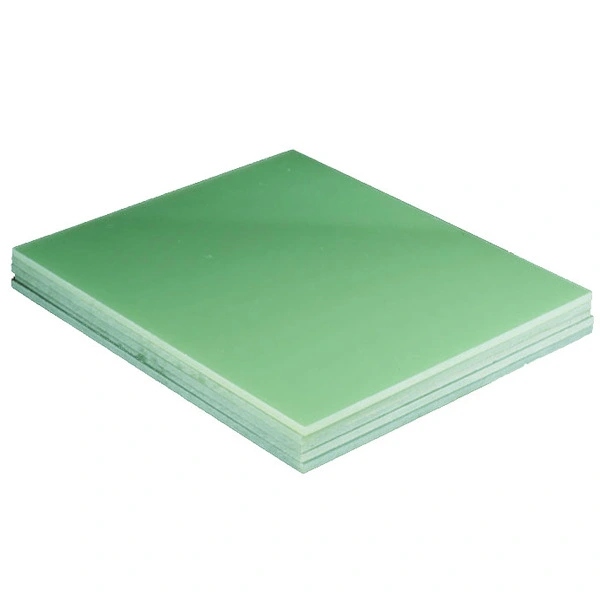Why Is G11 Preferred for High-Altitude Electrical Insulation?
Superior Dielectric Properties
G11 sheets are highly valued in aerospace for their exceptional dielectric strength, which makes them perfect for high-altitude electrical insulation. This ability to withstand intense electromagnetic fields without electrical breakdown ensures that critical aerospace electrical systems remain safe and reliable. Such superior insulation is especially important in the ionosphere, where charged particles and radiation can interfere with electronics. By resisting these electrical stresses, G11 sheets help maintain uninterrupted operation of avionics and other vital aerospace equipment.
Low Moisture Absorption
The aerospace environment exposes materials to rapid and frequent fluctuations in humidity and temperature, posing challenges for insulation reliability. G11 sheets offer remarkably low moisture absorption, allowing them to preserve their insulating properties even under these variable conditions. This characteristic prevents moisture-induced electrical short circuits and degradation, ensuring consistent and dependable performance of aerospace electrical systems across different altitudes and climatic zones. Consequently, G11 sheets are trusted materials for maintaining insulation integrity in harsh aerospace environments.
Resistance to Arc Tracking
Arc tracking presents a serious risk in aerospace electrical systems, potentially leading to fires and catastrophic failures. G11 sheets exhibit excellent resistance to arc tracking, effectively reducing the likelihood of such dangerous electrical discharges. This resistance enhances the safety and reliability of electrical insulation, particularly in high-voltage aerospace applications where system integrity is critical. By mitigating arc tracking risks, G11 sheets contribute significantly to the overall protection and longevity of aerospace electrical equipment.
Mechanical and Thermal Endurance in Aerospace Applications
High Strength-to-Weight Ratio
In aerospace engineering, minimizing weight is crucial to improving performance and efficiency. G11 sheets provide an exceptional strength-to-weight ratio, offering strong mechanical support without significantly increasing the mass of aircraft or spacecraft components. This advantage enables engineers to design parts that are both lightweight and durable, which directly contributes to enhanced fuel efficiency, greater payload capacity, and overall better operational performance in demanding aerospace environments.
Thermal Stability Across Extreme Temperatures
Aerospace applications often involve exposure to extreme temperature variations, from freezing high-altitude conditions to intense heat during high-speed flight or spacecraft re-entry. G11 sheets demonstrate remarkable thermal stability, maintaining their mechanical strength and electrical insulating properties across these wide temperature ranges. This capability ensures that components made from G11 perform reliably and consistently, regardless of harsh thermal stresses, which is essential for maintaining the safety and effectiveness of aerospace systems.
Dimensional Stability Under Stress
G11 sheets exhibit excellent dimensional stability when subjected to both mechanical forces and thermal fluctuations. This characteristic is vital in aerospace applications where precision and consistent performance are critical. Components fabricated from G11 maintain their exact shape and dimensions even under the intense conditions experienced during flight, ensuring accurate fit, proper function, and long-term reliability throughout the operational lifespan of the aerospace equipment or vehicle.
G11 Sheets in Avionics, Satellites, and Structural Components
Avionics Integration
Modern aircraft depend on advanced avionics systems for essential functions such as navigation, communication, and flight control. G11 sheets are widely used as substrates for printed circuit boards within these avionics systems due to their excellent electrical insulation and mechanical strength. These properties ensure dependable performance and protect sensitive electronics from environmental stresses encountered in aerospace settings, thereby supporting the safe and efficient operation of aircraft under demanding conditions.
Satellite Components
Satellites face extreme conditions in space, including intense radiation, wide temperature fluctuations, and vacuum environments. G11 sheets are extensively employed in satellite structural parts and electrical systems because of their low outgassing, thermal stability, and resistance to radiation. These qualities make G11 sheets ideal for maintaining the integrity and functionality of satellite systems over long missions, helping to ensure reliability and longevity in the challenging space environment.
Structural Reinforcement
In addition to electrical uses, G11 sheets contribute significantly to the structural reinforcement of aerospace components. Their combination of high strength and low weight allows them to form composite structures in both aircraft and spacecraft. Common applications include interior panels, bulkheads, and other non-load-bearing parts where durability, fire resistance, and weight savings are critical. This enhances overall structural integrity while minimizing added mass, which is vital for aerospace efficiency and safety.
Conclusion
G11 sheets have established themselves as an indispensable material in aerospace systems, offering a unique blend of electrical insulation, mechanical strength, and thermal stability. Their role in high-altitude electrical insulation, mechanical and thermal endurance, and versatile applications in avionics, satellites, and structural components underscores their importance in modern aerospace engineering. As the aerospace industry continues to push the boundaries of technology and exploration, G11 sheets will undoubtedly remain a crucial element in the development of safer, more efficient, and more advanced aerospace systems.
Contact Us
For more information about G11 sheets and their applications in aerospace systems, please contact us at info@jhd-material.com. Our team of experts is ready to assist you in finding the right solutions for your aerospace projects.






